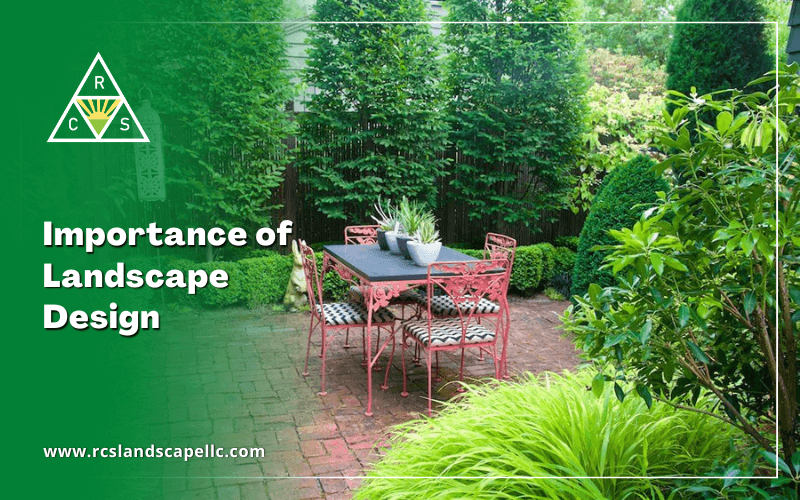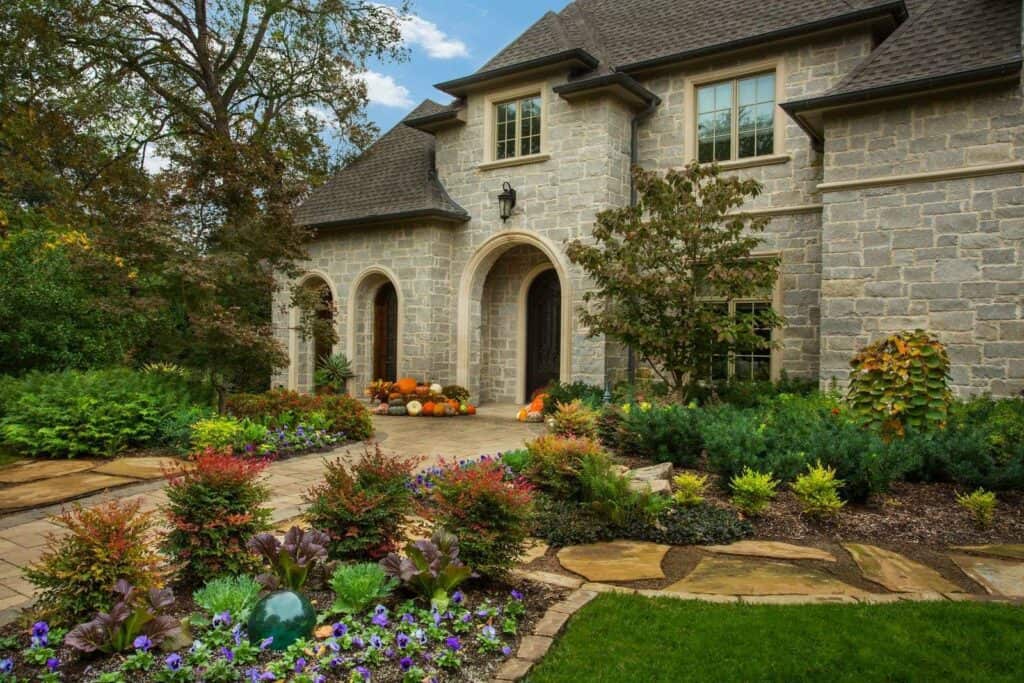The Landscape Design Ideas
Wiki Article
The smart Trick of Landscape Design That Nobody is Talking About
Table of ContentsAn Unbiased View of Landscape DesignThe Facts About Landscape Design UncoveredUnknown Facts About Landscape DesignThe Basic Principles Of Landscape Design A Biased View of Landscape Design
Official design motif. Credit Rating: Gail Hansen, UF/IFAS The lawn is an extension of the home where a selection of activities take area. A lawn can usually be divided into three areas: public (the front lawn), personal (the backyard), and service (typically the side lawn). The location of activity locations depends primarily on the type of area, the size of space needed, the kind of activity, and the desired closeness to various other tasks and structures.The outside wall surface of the home commonly functions as the first wall surface or starting factor of an outside room. Incompatible uses must be divided, and associated activities, such as food preparation and eating, must be created to make the backyard much more reliable and enjoyable. When using hardscape to create areas, make use of building and construction product similar to that made use of in your home for connection from your house right into the yard.
Connected spaces. Credit Score: Gail Hansen, UF/IFAS Making use of similar hardscape features and duplicating plants draws the eye around the yard. Important points along the road can be stressed with plantings or attributes that attract focus and urge activity in a specific instructions. Relocating along the path takes an individual from one location to the following and allows the customer to have a range of experiences.
Little Known Facts About Landscape Design.

For mental comfort plants are used as physical or implied barriers for privacy and safety. Physical obstacles obstruct both the view and accessibility to a room and consist of fencings, wall surfaces and plant hedges.
Physical and suggested obstacles. Credit: Gail Hansen, UF/IFAS For these reasons, the sorts of plants to be utilized (such as trees, bushes, or groundcovers) need to be picked in the beginning of planning (Landscape Design). Plant kinds are selected for their practical abilities to make sure that their future function and required area can be considered at the very same time

Landscape Design - Truths
Each plant mass is in front of, behind, or beside, an additional mass. Number 11. Horizontal plant layers. Credit History: Gail Hansen, UF/IFAS Number 12. Upright plant layers. Landscape Design. Credit Scores: Gail Hansen, UF/IFAS Duplicating plants within a mass and repeating masses with comparable plants connects the yard together. The private plant features need to be considered to effectively layer and mass plants.All plant make-ups start with the main structure plants, the huge, primarily evergreen history plants-such as the trees and big bushes. These plants different or enframe areas, regulate the dimension of the room, and offer the starting point for selecting the suitable features of the second layer, midground plants, for massing and infill.
Vital points in the garden should be Recommended Site highlighted by the use distinct plants, distinct structures, or yard ornaments. Marking limits or entryways to rooms can be made with entrances, arbors, and actions, or via the use of special and vivid plants. The form and/or style motif of the yard will typically help identify the essential points and just how they need to be highlighted.
Various other crucial locations in the backyard are prime focus, which is made use of to aesthetically arrange a designed location. The sort of focal factor commonly depends upon the viewing point of view. Various viewpoints or point of views can disclose different make-ups in the landscape that may require a selection of focal points. Contrasting appearance, shape, dimension and shade will record and hold published here the eye.
Examine This Report about Landscape Design

Number 13. Plant types. Credit: Gail Hansen, UF/IFAS After form, structure is the following leading function of a plant; rugged, tool and fine appearances can be utilized for comparison and emphasis in the landscape. Type and structure both trump color in the garden for the majority of the year. Throughout specific seasons, color will certainly be the most obvious attribute of the garden.
The pleasant scent of plants, the sound of wind in the trees, the noise and structure of water, and the shades and structures of sculptures, pots and yard furnishings all contribute to the experience of the garden. One information that is frequently overlooked is the result of light on the appearances of the plants.

All about Landscape Design
It is necessary to know the eventual fully grown dimension of plants so they can be positioned in the right location and spaced effectively when they are set up. Offering plants room to grow is an obstacle because the typical mature size is usually based upon optimal expanding problems and the ecological problems of a website might trigger a plant to grow bigger or stay smaller.
Report this wiki page